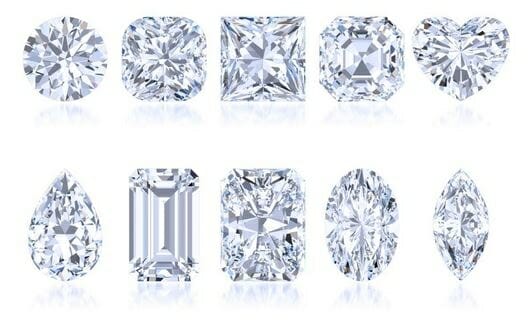Welcome back to the Diamonds Hatton Garden blog where we bring you the latest updates from our London jewellery workshop, diamond engagement rings and diamond jewellery. As leading jewellers in Hatton Garden we are often asked by clients about the exciting, and sometimes scary, world of diamond shapes. In today’s blog post we share some of the most popular diamond shapes, explore how each shape is different and how to choose the right diamond shape for you.
Choosing an engagement ring is an exciting time for couples as the promise of a new life together and new commitments starts. However, it goes without saying that choosing the right diamond and right ring can, indeed, be a stressful affair. With so much choice and designs it can be difficult to make a decision. Firstly, one thing we would say is that there is no right or wrong! Choosing a diamond engagement ring for your partner is a very special and personal thing and as long as you both like it, we see that as the most important factor. However, for those weighing up their options, their tastes and what to choose, we offer an insight into the pros and cons of the most popular diamond shapes.
Round or Brilliant Cut
The round brilliant cut diamond is the most popular diamond shape available and it is estimated that it accounts for over half of all diamonds sold. Why is this? Well, simply put the round cut diamond gives the most amount of brilliance (sparkle) given the classic shiny diamond look. First created in the 1700s, the cut has become increasingly popular since its inception but it wasn’t until the last 100 years that the round cut became as popular as it is today.
- Advantages of a round cut diamond: The brightest and most shiny of all diamond cuts producing beautiful and intense brilliance.
- Disadvantages: The most expensive of diamond shapes.
Oval Cut
The Oval shape is one of the more modern diamond shapes and was created in the 1960s by the large diamond company Lazare Kaplan . Whilst the shape is similar to the round brilliant, it has an elongated crown giving it a larger appearance than its true size. Oval diamonds set in engagement rings will make the finger of the wearer look slender and longer.
- Advantages of the Oval cut: Oval cut diamonds are an elegant way to give fingers an elongated look.
- Disadvantages: Oval cut diamonds are an incredibly versatile shape and have recently come back into fashion. One disadvantage, there aren’t many, is that the shape can be prone to uneven light distribution.
Princess Cut
Once again, the Princes Cut is a more modern diamond cut and originates from the decade of excess; the 1980’s. The Princess Cut is notable for its 90-degree corners and rectangular outline. Despite its relatively young age, the cut creates a classic and elegant look when set in a beautiful mount.
- Advantages of the Princess Cut: : Princess cut diamonds are almost as brilliant as round diamonds and are cut to maximise sparkle.
- Cons: If your setting doesn’t protect the stone as much as possible, princess cut diamonds have been known to chip at the corners.
Cushion Cut
The cushion cut dates back over 3 centuries to the 1700s and is reminiscent of an early brilliant cut now called “old mine cut“ which was named after the old mines of brazil. This soft and luxurious shape is elegant and classic which can suit those with more vintage or antique tastes.
- Advantages of Cushion Cut diamonds: Cushion cut diamonds are the perfect blend of classic shapes with a contemporary,trendy twist..
- Disadvantages: Cushion cut diamonds can often be poorly cut. We always recommend that you inspect the diamond prior to purchase or ask for HD photos and videos to assess the quality of the diamond.
Emerald Cut
The Emerald cut is one of the oldest, most historic of all diamond shapes and dates back to the 1500s and was seen as a way to reduce the pressure on a diamond when being cut. The name emerald cut comes from the cut being used primarily for emeralds and is a sophisticated, classic look that offers a timeless beauty.
- Advantages of an Emerald Cut diamond: Emerald cut diamonds look larger than many other shapes and offer you great value if you are looking for a larger centre stone.
- Disadvantages of Emerald cut diamonds: Emerald cut diamonds have a large surface area due to their shape, because of this imperfections of blemishes can be more easier to see than in other shapes.
Marquise Cut
Did you know that the marquise cut has its origins in 18th century France? Legend has it that King Louis XV of France, who longed for a diamond shape that could resemble the lips of his mistress, requested the shape to be designed. Much like other oval, elongated shapes the marquise cut is considered to be a classic diamond cut but is not quite as popular as other shapes.
- Advantages of the Marquise cut: Similar to emerald cut diamonds, the marquise shape, long and elongated, creates the look of a larger diamond. the largest-looking diamonds.
- Disadvantages of marquise diamonds: The choosing of a diamond shape is very much a personal preference, of course, however, marquise diamonds may be seen to be slightly old fashioned.
Pear Cut
A historic cut, the pear cut can be traced back to the early 1400s in Belgium and credited to legendary diamond cutter Lodewyk van Berquem. Van Berquem is seen as the father of modern diamond cutting as is responsible for the placement of facets in modern diamond cuts, as well as the use of symmetry in diamond cutting.
Pear cut diamonds are designed to make light dance through them. They are both traditional and brilliant.
- Advantages of Pear Cut Diamonds: : Pear cut diamonds are designed to make light dance through them. They are both traditional and brilliant.
- Disadvantages: If incorrectly set, the tip of a pear cut can easily chip.
Heart Cut
A legendary shape that is the very symbol of love, the heart shape dates back to the late 1400s and was considered a symbol of royalty.
- Advantages of Heart cut diamonds: With strong sparkle and a beautiful shape, the heart shape is one of the best shapes that offer sparkle for carat size.
- Disadvantages: If the diamond is too small it can be difficult for the shape to look clean.
For more information and to book your consultation, contact our team via info@diamondshg.co.uk, on +44 (0) 7951 060238 or via https://diamondshattongarden.co.uk/contact-us/.

